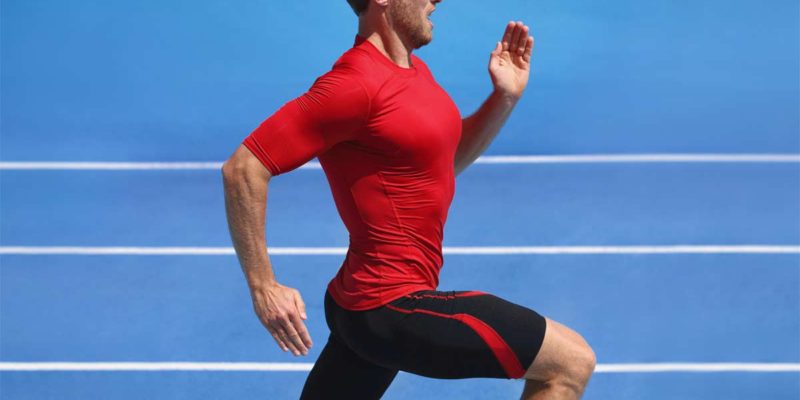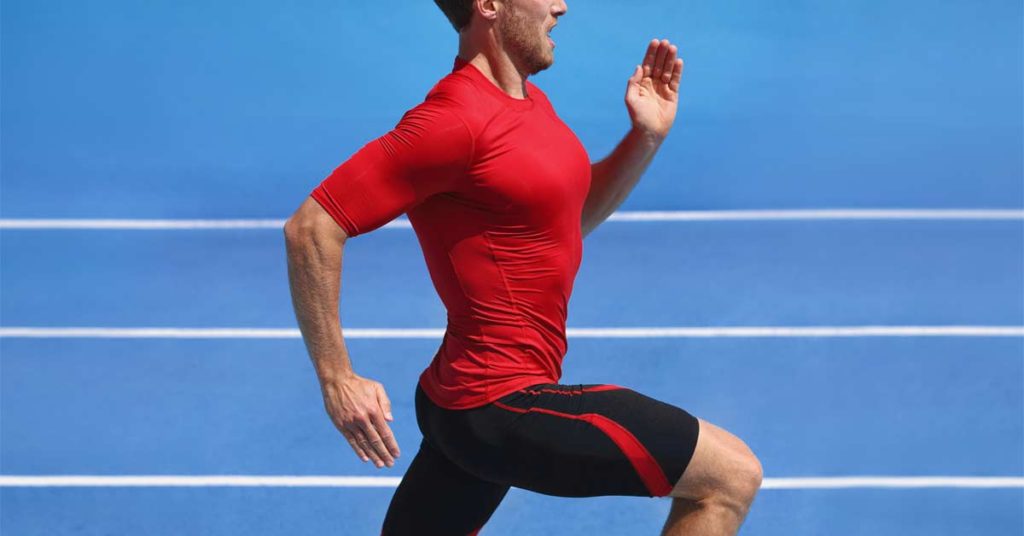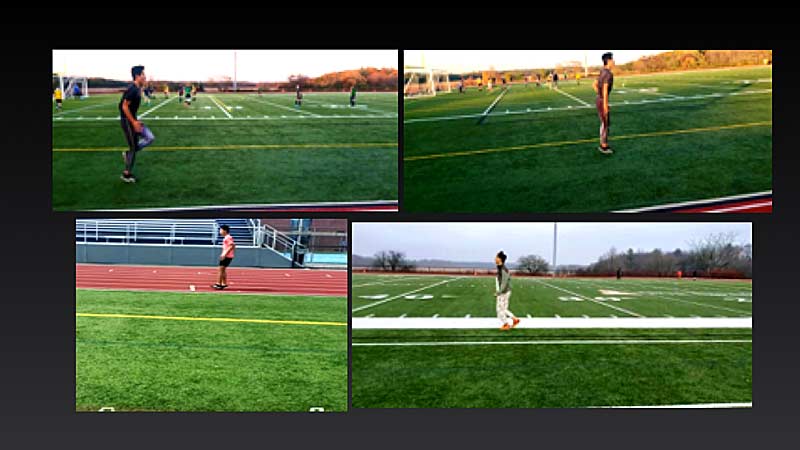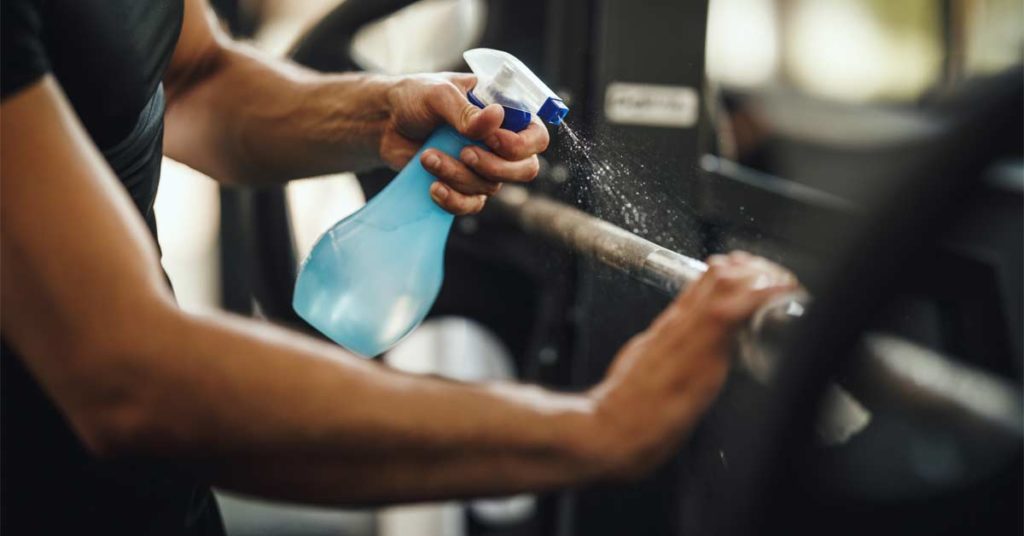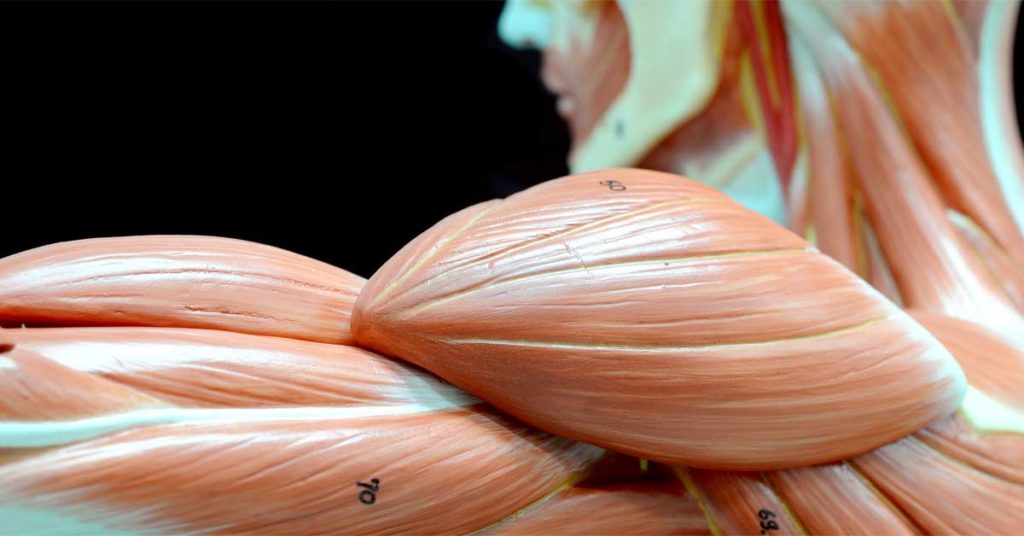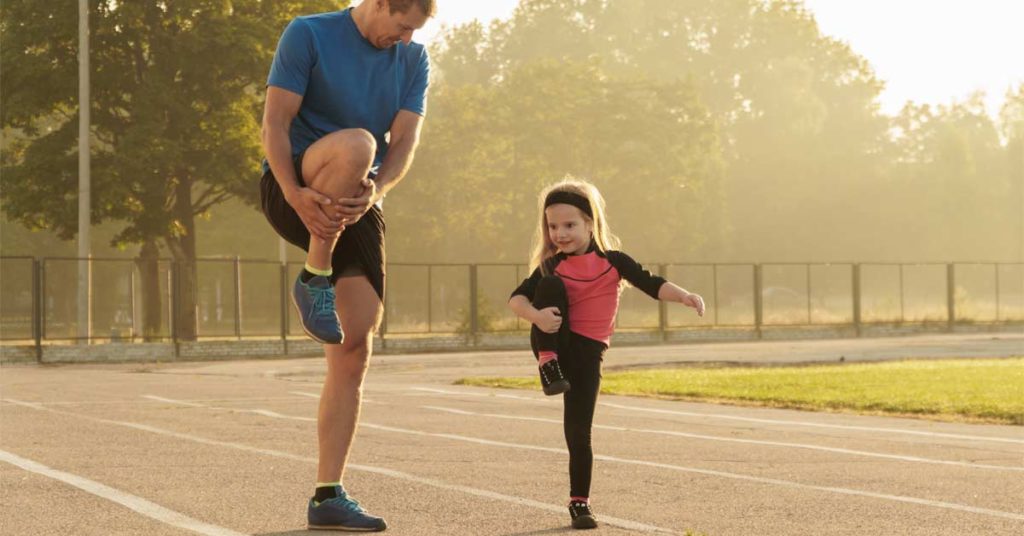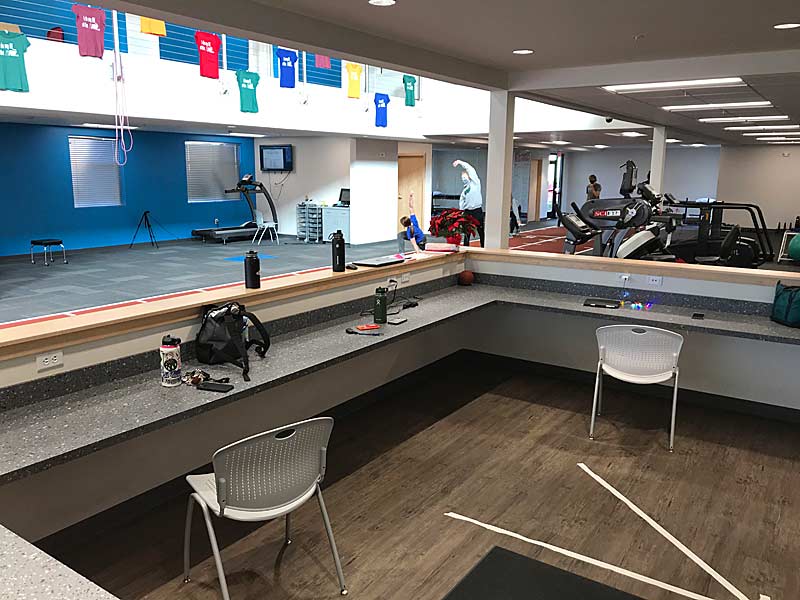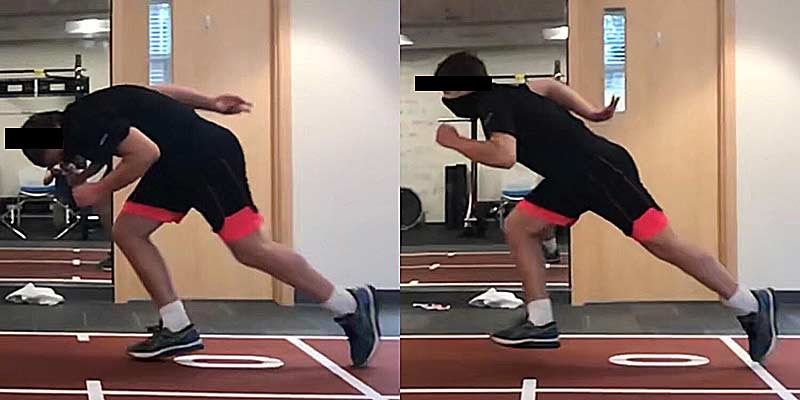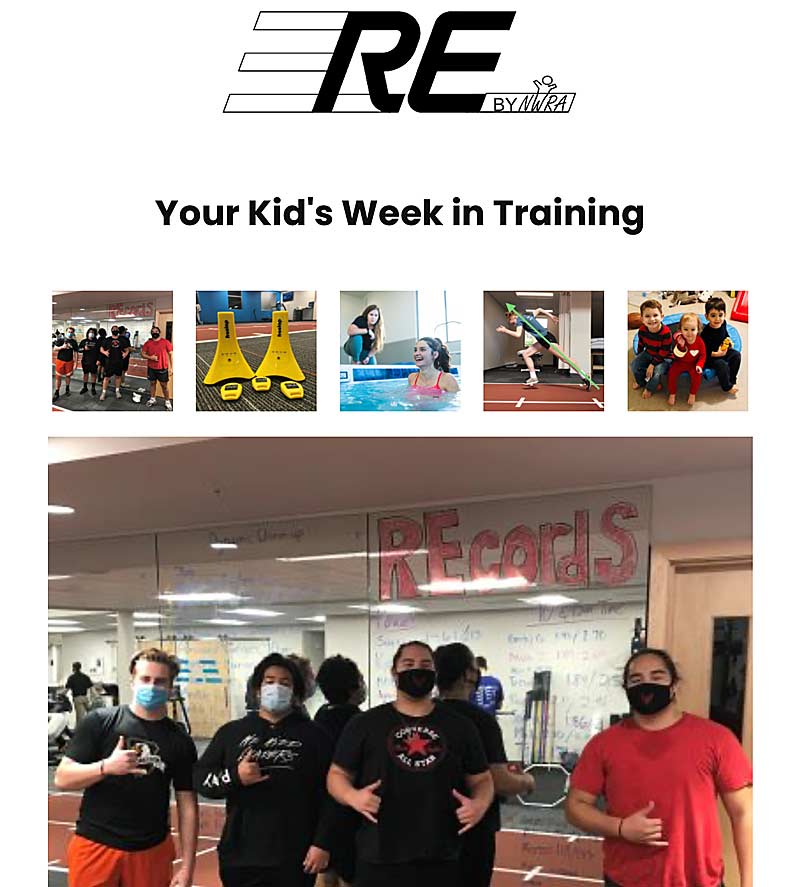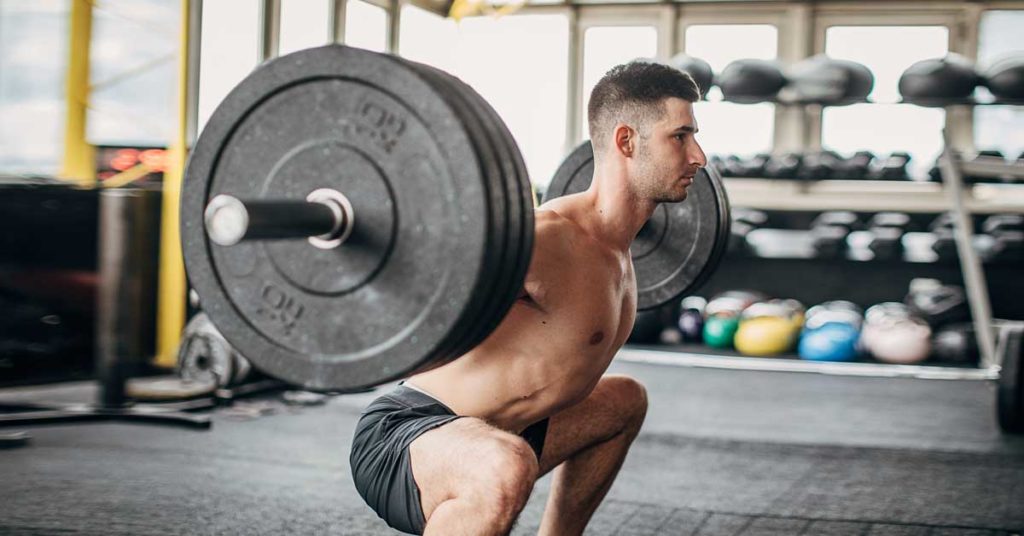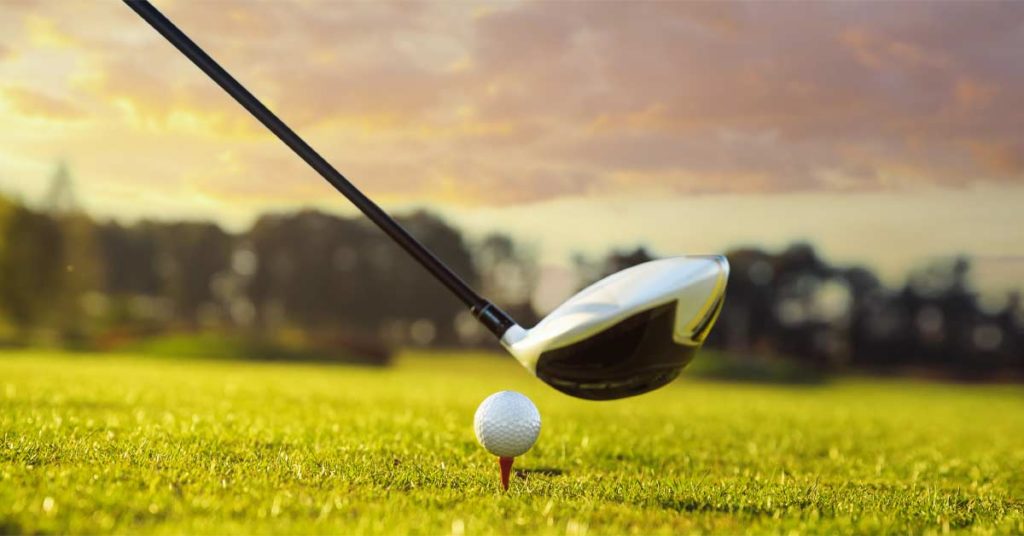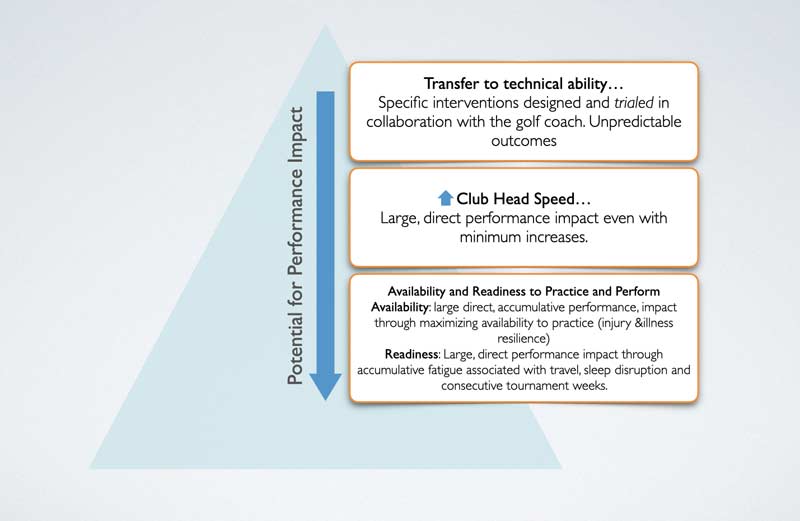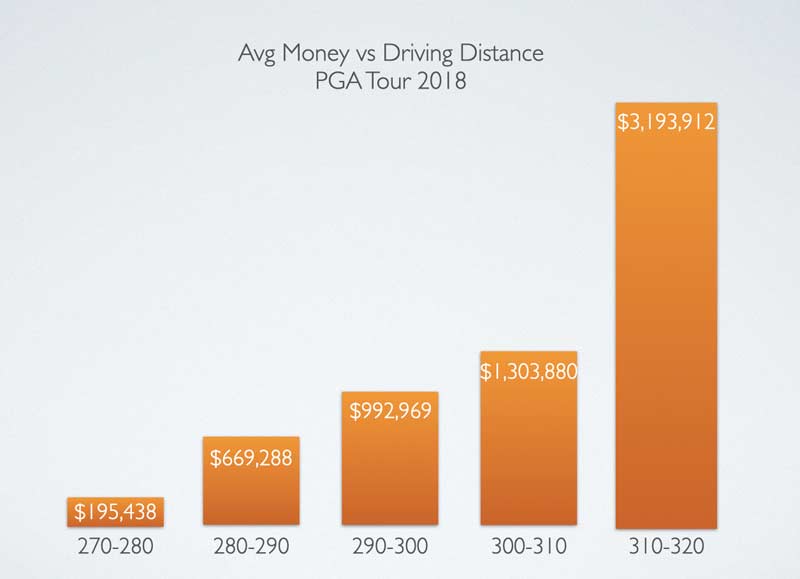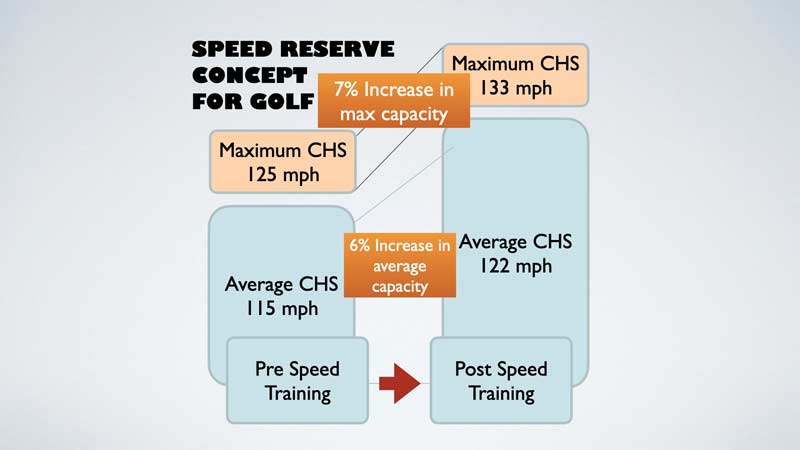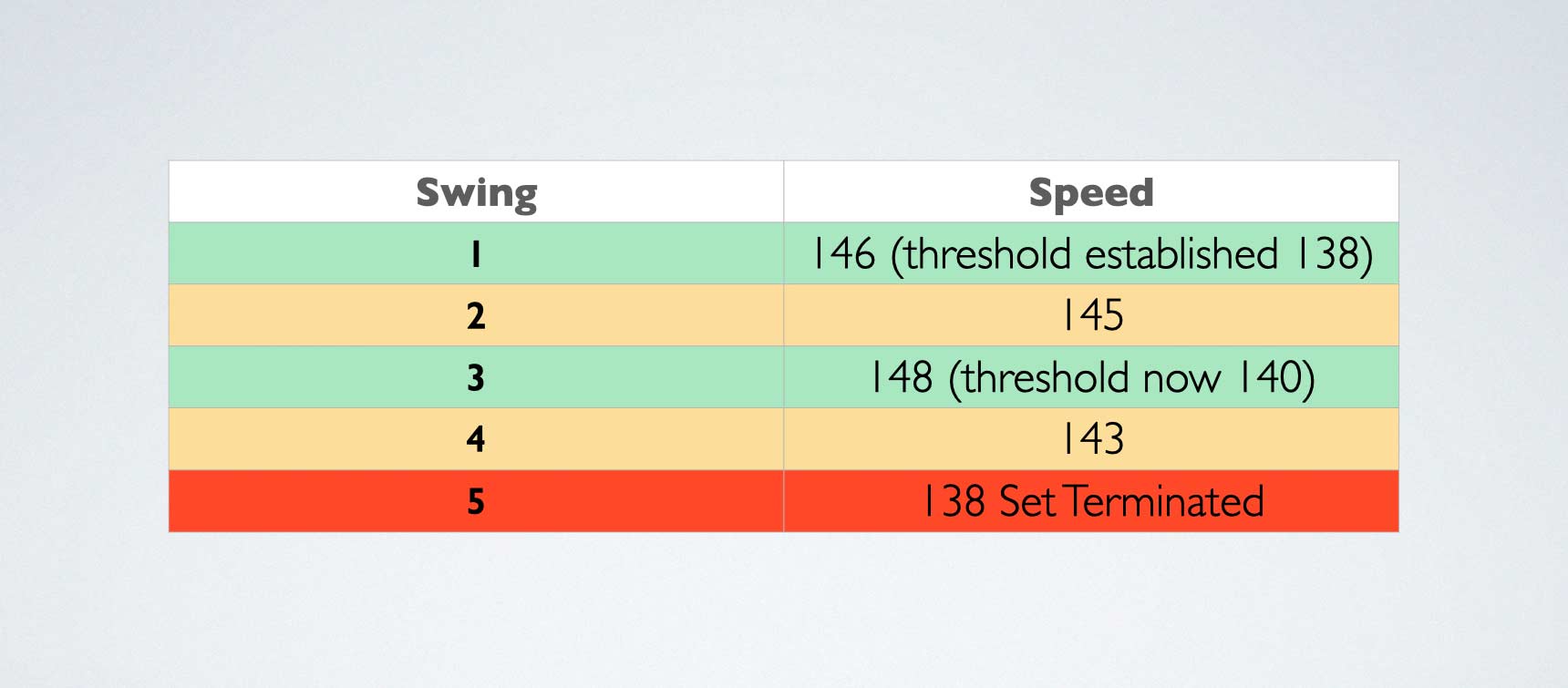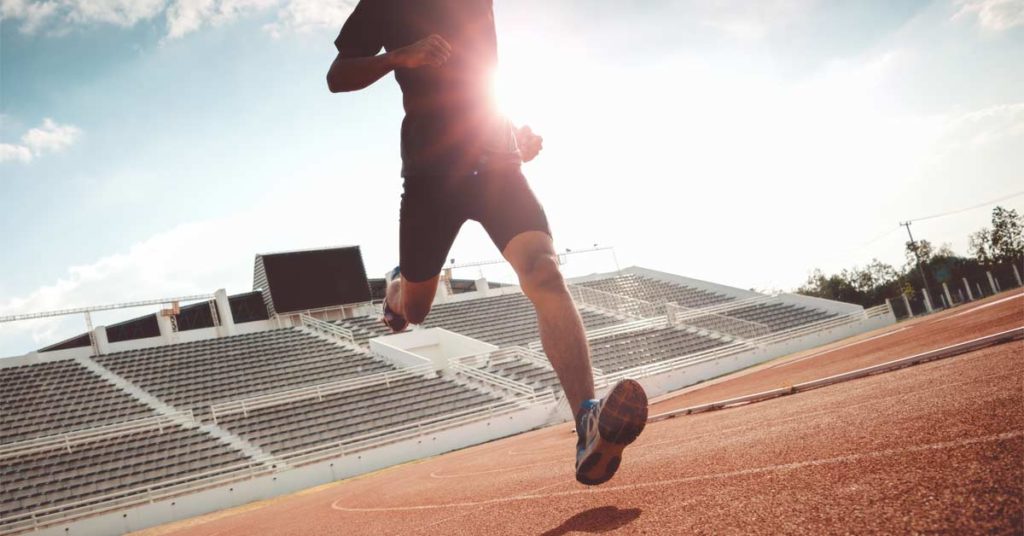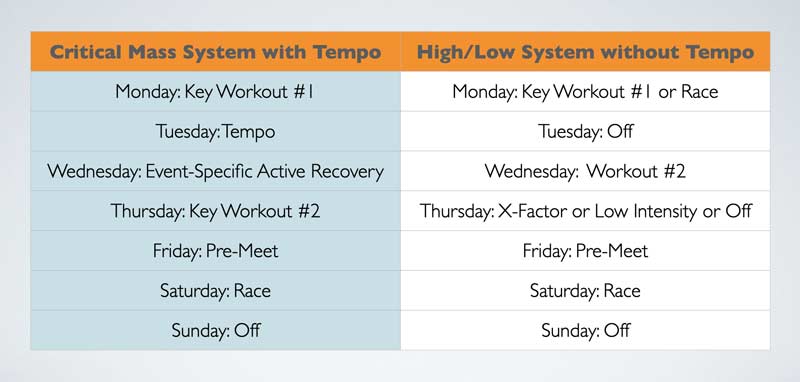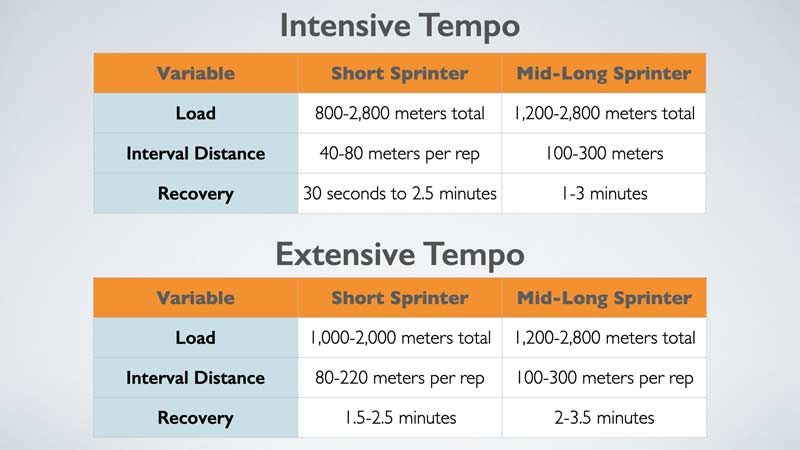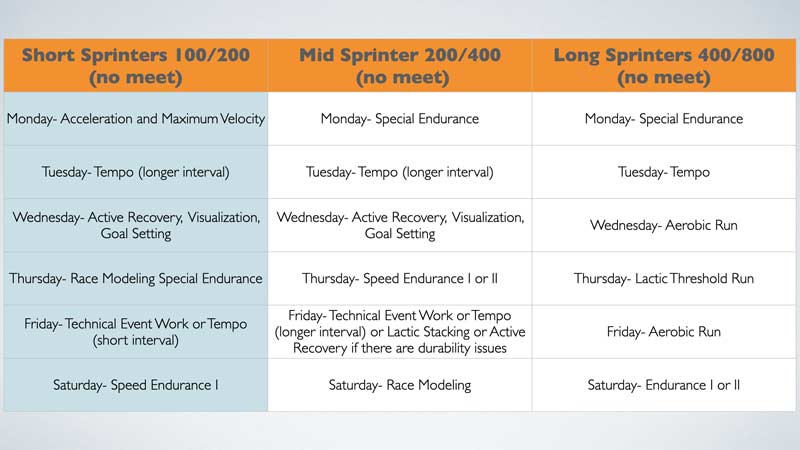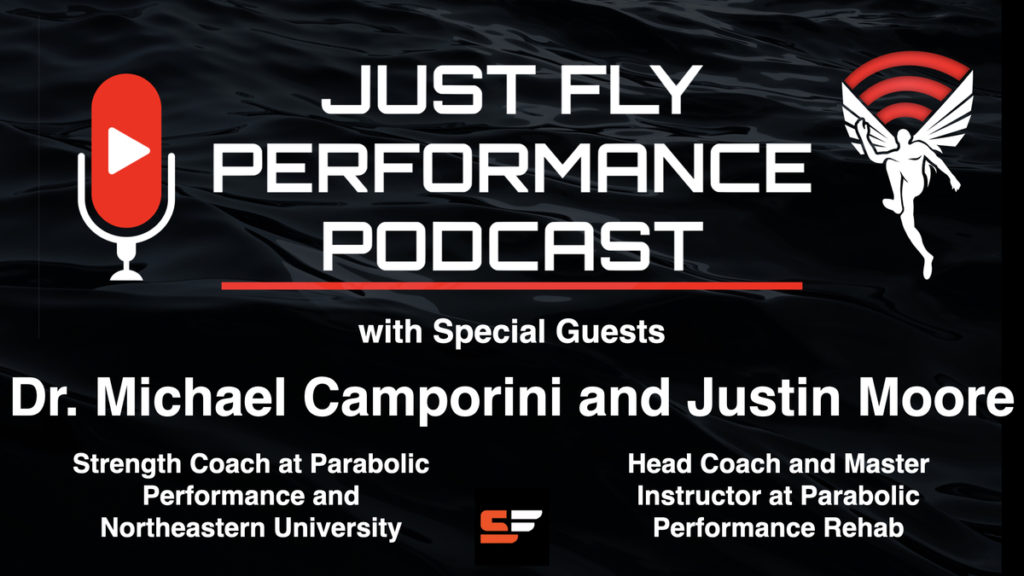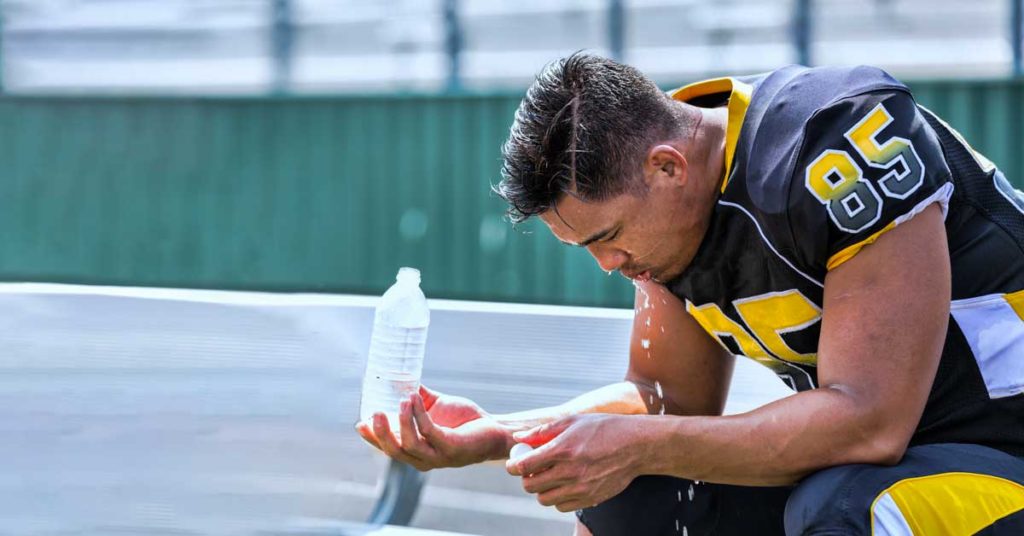
Third quarter. Tie game. Your star player is sitting on the bench during a time-out. Despite only playing a few minutes, he is unable to catch his breath. You advise him to put his hands behind his head and take a few big, deep breaths. The moment passes, and he lets you know he can go back in the game. You tell yourself you shouldn’t be too concerned. This is normal for kids, right?
Breathing deficiencies are more common than most coaches realize. Recent research has shown that 15-25% of athletes suffer from asthma-like symptoms.1 On a team of 20 kids, 4-5 of the athletes are probably suffering from issues like wheezing, coughing, congestion, and an inability to reach their peak physical state.
Breathing is one of the many pillars of performance, yet breathing deficiencies are more common than most coaches realize, explains @TomBroback. Share on XWhy would you need to address breathing with your athletes? That is a great question that I hope to answer emphatically to encourage you to focus on this aspect of health and performance. Breathing is one of the many pillars of performance. Exercise, mindset, nutrition, and recovery are all other pillars that I talk about with other coaches and athletes. You may have more, and that works. Breathing will always be included because every athlete has to breathe in order to not only live, but to play their sport well.

Commons Issues Athletes Have with Breathing
Breathing drills matter to me because I grew up with asthma. As an active athlete my whole life, I faced additional challenges in my health and performance. I did not know of these drills growing up and firmly believe incorporating them on a regular basis would have changed my athletic career. The best education at the time was to go to a doctor, use an inhaler, and stop playing when it got too hard.
This message has all been too prevalent for athletes with breathing issues. Doctors and medications are still important, but there is so much more we, as coaches, can provide our athletes. Beyond this, there are common issues most athletes suffer from when it comes to breathing.
Less Is More
Contrary to popular belief, breathing should occur less frequently than usual. Over-breathing causes an excess release of carbon dioxide, which negatively impacts the release of oxygen from the red blood cells to the working muscles.2 People think breathing more will increase the oxygen intake, yet our blood cells are typically near their capacity for oxygen molecules anyway. This is why breathing less often is better for your athletes to perform at their best.
If you don’t know whether your athletes are breathing correctly, consider this. Breathing cycles have been shown to be most efficient with a 5.5-second inhale and a 5.5-second exhale, giving us an average of 5.5 breaths/minute.3 Have each athlete count their breaths per minute. I bet a lot will have more than 10 breaths per minute and certainly can benefit from breathing drills.
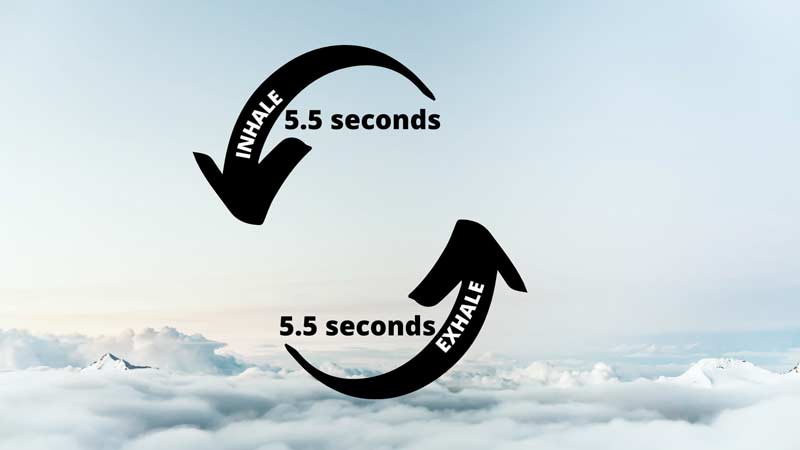
Quiet, Not Loud
Along with breathing less often, breathing quieter will be more beneficial to your athletes. Taking a big, deep breath is going to affect the carbon dioxide pattern mentioned above. At rest, your athletes should barely be able to hear themselves breathe. Instructing athletes to take a large, deep breath is not the most efficient pattern to help them calm down and reset despite the common advice coaches give their players.
Along with breathing less often, breathing quieter will be more beneficial to your athletes, says @TomBroback. Share on X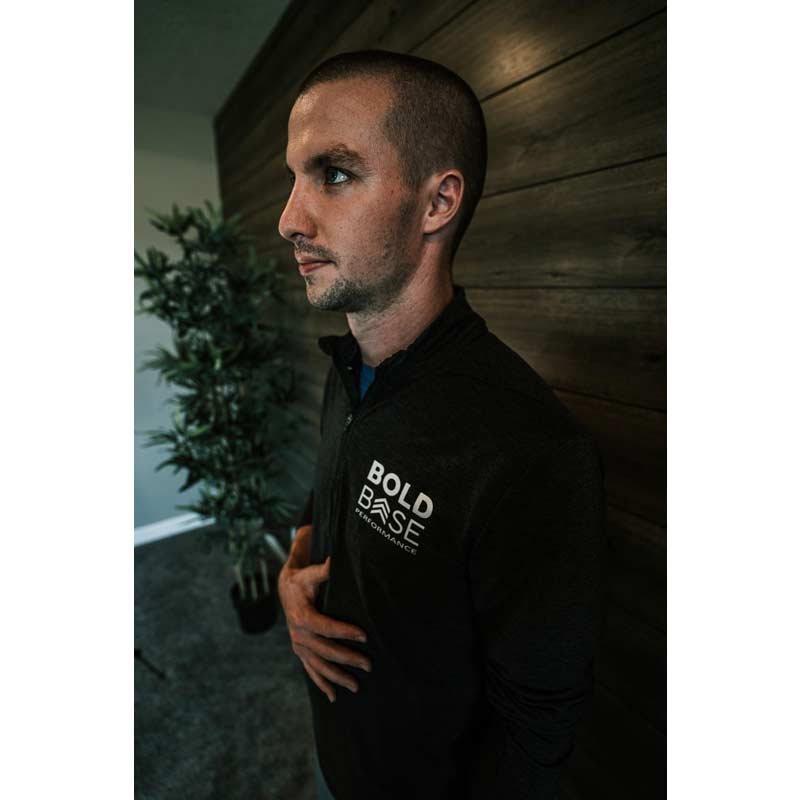
Use Your Nose to Breathe
Noses are meant for breathing. Mouths are meant for eating. A large reason for this is nasal breathing will activate your parasympathetic nervous system (PNS) more effectively than mouth breathing does.2 When you combine this with the proper use of your diaphragm muscle, you maximize the efficiency of the human body. Considering that we breathe every minute of every day, we want to make sure we aren’t in an elevated sympathetic state from the way we breathe all the time. Nasal breathing for the win.
Hands on Knees Is Okay
Bonus time. This research article has made the rounds in the strength and conditioning community, and I feel it is of most importance to mention here. A 2019 study of recovery positions found athletes recovered better with their hands on their knees, rather than the typically coached behind the head position.4 Most athletes I know feel the knee position is more natural, and maybe we need to listen to this intuitive desire.
There is no worse feeling as an athlete, especially with asthma, than a coach yelling at you to get your hands behind your head as you gasp for air. We can work on forgetting what the optics look like and focus on what science tells us is best for recovery. Would you rather look tougher and not perform well? I don’t think so.
We have now identified the common issues athletes have with breathing. We know our society is wired to stimulate the sympathetic system all day, from text messages to breaking news to portable speakers to the stress of school and work. Helping athletes turn their brain, their nervous system, and their environment from a heightened sympathetic state to a more neutral parasympathetic state can be all the difference in creating a great workout session, an excellent practice, or the ability to get a good night’s rest.
Breathing Drills
Let’s dive into how to do this. Here are four common drills I use with athletes to help them breathe better, feel better, and most of all, perform better.
Belly Breathing
Belly breathing is a phenomenal way to get athletes into a better psychological state before a practice, workout, or game. The team at Reflexive Performance Reset (RPR) has done a tremendous job of advocating for belly breathing as part of a complete program. Belly breathing emphasizes the use of the diaphragm, combined with nasal breathing, to calm the body and mind before a stressful event like a workout or game. It took me a moment or two to figure out this is a time we want increased PNS activity to better prepare the athlete for the massive amount of stimulus and stress about to occur.
Belly breathing emphasizes the use of the diaphragm, combined with nasal breathing, to calm the body and mind before a stressful event like a workout or game, says @TomBroback. Share on XVideo 1. You can do belly breathing in a variety of positions. I like to get the athlete on the ground with their hands on their sides to get full expansion and proper rib cage movement with each breath.
A darkened room can also help the athlete settle down their mind before competition. I advocate for 3-5 minutes of this, typically combined with RPR drills.
Breath Holds
Breath holds are an excellent exercise you can add to a workout program. This drill doesn’t take very long, but it is incredibly effective. The idea of this is to increase the tolerance of carbon dioxide in your body to improve the exchange of oxygen between your red blood cells and your working muscles.
Video 2. Working on holding your breath until you feel the urge to breathe will have a dramatic impact on performance, especially in athletes who do not breathe efficiently.
Holding your breath for a long time is impressive, but we are more concerned here with delaying the time it takes for your body to tell you a breath is needed.
7-11 Breathing Drill
This is an excellent drill to incorporate after the end of a workout. When we work out or practice hard, the body is elevated into a sympathetic state. In order to maximize our recovery time, we need to transition into a parasympathetic state as quickly as possible. This drill speeds up the process if you have your athletes do it directly after a session or practice.
Video 3. With 7-11 breathing, both numbers stand for seconds. The “7” is for a seven-second inhale, while the “11” is for an 11-second exhale.
Doing this for 3-5 minutes after a workout or practice can be a game-changer for your athletes. Once again, I prefer athletes to lie down and dim the lights and music if they can. If you don’t have time to do this after a workout or practice, instruct your athletes to get this drill in at home as soon as possible.
4×4 Box Breathing
Box breathing is a perfect drill to do right before bedtime. Similar to 7-11, box breathing will get your athletes in a parasympathetic state to calm their brain and nervous system before bedtime. The difference with this drill is there are breath holds incorporated. “4×4” stands for a four-second inhale, a four-second pause, a four-second exhale, and another four-second breath hold.
Video 4. Repeated box breathing for 3-5 minutes before bed can improve the quality and quantity of sleep, which athletes most desperately need.
Breath Has Power
You don’t have to be a respiratory therapist to understand the power of breathing drills. Respected resources like The Oxygen Advantage and Breath can help you take your athletes to the next level. I hope you start practicing these drills with your athletes. Performing 7-11 breathing after basketball practice, belly breathing before a state meet, or 4×4 breathing before bedtime can be a game-changer for your team.
Since you’re here…
…we have a small favor to ask. More people are reading SimpliFaster than ever, and each week we bring you compelling content from coaches, sport scientists, and physiotherapists who are devoted to building better athletes. Please take a moment to share the articles on social media, engage the authors with questions and comments below, and link to articles when appropriate if you have a blog or participate on forums of related topics. — SF
References
1. Miller, M.G., Weiler, J.M., Baker, R., Collins, J., and D’Alonzo, G. “National Athletic Trainers’ Association position statement: Management of asthma in athletes.” Journal of Athletic Training. 2005;40(3):224-245.
2. McKeown, P. The Oxygen Advantage: Simple, scientifically proven breathing techniques to help you become healthier, slimmer, faster, and fitter. New York, NY: William Morrow, an imprint of HarperCollins. 2016.
3. Nestor, J. Breath: The new science of a lost art. New York: Riverhead Books, an imprint of Penguin Random House LLC. 2020.
4. Michaelson, J.V., Brilla, L.R., Suprak, D.N., McLaughlin, W.L., and Dahlquist, D.T. “Effects of Two Different Recovery Postures during High-Intensity Interval Training.” Translational Journal of the ACSM. 2019;4(4):23-27. doi: 10.1249/TJX.0000000000000079

